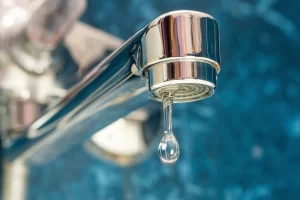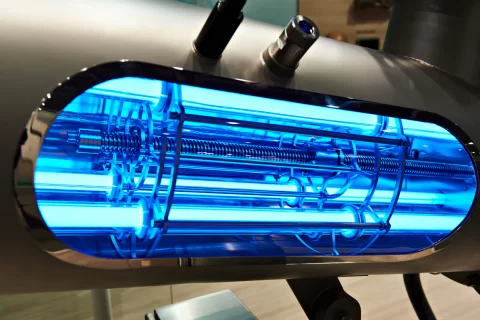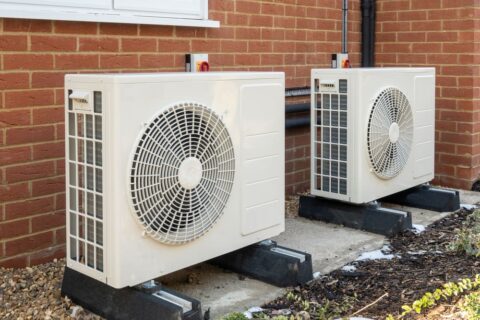Maximize Efficiency with Our Ultimate Guide to Water-Saving Fixtures
Water-saving fixtures have become essential in modern homes. They help reduce water waste and lower utility bills. Historically, plumbing systems used excessive water and energy usage, leading to environmental concerns with steam showers and evaporative coolers while emphasizing energy efficiency. The shift towards efficiency began in the late 20th century as awareness of water scarcity grew. Today, many households are adopting eco-friendly practices.
This water-saving fixture guide will explore various options available for your home. From low-flow toilets to efficient showerheads, these fixtures not only conserve water but also enhance your daily routines. Understanding how to choose the right products can lead to significant savings and a positive impact on the environment. Dive into this guide to discover how simple changes in water heating can make a big difference.
Key Takeaways
-
Consider installing high-efficiency toilets to significantly reduce water usage in your home, as they use less water per flush compared to standard models.
-
Explore performance showerheads that provide a strong spray while using less water, helping you save on both water and energy bills.
-
Learn about pressure-reducing valves, which can help regulate water flow in your plumbing system, reducing waste and improving efficiency.
-
Look into recirculating hot-water systems to ensure you have hot water available instantly, which prevents wasting water while waiting for it to heat up.
-
Upgrade to water-saving faucets that minimize flow without sacrificing performance, making them ideal for kitchens and bathrooms.
-
Regularly check for leaks in your fixtures and repair them promptly to prevent unnecessary water loss and increased utility costs.
List of Top Water-Saving Fixtures
Low-Flow Toilets
Low-flow toilets use less water per flush compared to traditional models. Older toilets often use 3.5 to 7 gallons per flush. In contrast, low-flow toilets use only 1.6 gallons or less. This change can save a household up to 20,000 gallons of water each year.
Many modern designs also feature dual-flush options. Users can choose between a full flush for solid waste and a reduced flush for liquid waste. This flexibility further reduces water use.
Aerated Faucets
Aerated faucets mix air with water to reduce flow without sacrificing pressure. Traditional faucets typically deliver around 2.2 gallons per minute (GPM). Aerated models can cut this down to 1.5 GPM or less.
This innovation helps conserve water while maintaining a strong stream. Switching to aerated faucets can save significant amounts of water over time, especially in kitchens and bathrooms.
Efficient Showerheads
Showerheads have evolved significantly in recent years. Older showerheads often use 2.5 GPM or more. Modern water-saving showerheads typically use only 1.8 GPM or less.
e advanced models even offer adjustable spray patterns that maintain pressure while saving water. These fixtures can save users thousands of gallons annually, making them a smart choice for eco-conscious homeowners.
Smart Irrigation Systems
Smart irrigation systems optimize water use in gardens and lawns. Traditional sprinkler systems often waste water by running on timers regardless of weather conditions. Smart systems adjust based on rainfall and soil moisture levels.
These systems can reduce outdoor water consumption by up to 50%. They help maintain healthy landscapes while conserving precious resources.
Rainwater Harvesting Systems
Rainwater harvesting systems collect rainwater for reuse in homes and businesses. These systems can capture significant amounts of water during rainy seasons. Collected rainwater is ideal for irrigation, flushing toilets, and washing clothes.
Installing these systems can greatly reduce reliance on municipal water sources, providing both environmental benefits and cost savings.
Comparison of Traditional vs Modern Fixtures
Traditional fixtures often consume large amounts of water without consideration for efficiency. For example, standard toilets may use over 3 gallons per flush, while modern low-flow toilets use about 1.6 gallons or less.
Switching to modern fixtures can lead to substantial savings in both water bills and environmental impact. The average household can save hundreds of dollars each year by upgrading their fixtures.
Understanding Pressure-Reducing Valves
Functionality
Pressure-reducing valves (PRVs) play a crucial role in plumbing systems. They control the water pressure entering a building. By doing this, they ensure that the pressure remains at a safe and efficient level. High water pressure can lead to various problems in plumbing systems. PRVs automatically adjust the pressure based on the needs of the system.
When water enters the valve, it encounters a diaphragm. This diaphragm moves in response to the pressure changes. If the incoming pressure is too high, the diaphragm pushes against it, reducing the flow. This process maintains optimal water pressure throughout the plumbing system.
Importance of Installation
Installing PRVs is vital for preventing pipe damage and leaks. High pressure can cause stress on pipes, leading to cracks or bursts. These issues can result in costly repairs and water waste. PRVs help avoid such situations by ensuring stable pressure levels.
Moreover, they protect appliances connected to the plumbing system. Dishwashers and washing machines operate best under specific pressures. A PRV helps maintain those conditions, extending appliance life.
Cost-Saving Benefits
The cost-saving benefits associated with PRVs are significant. Reduced water usage leads to lower utility bills. When PRVs lower water pressure, they effectively decrease the amount of water flowing through fixtures.
This reduction means households use less water without affecting their daily activities. For instance, low-flow toilets and showerheads work better with controlled pressure. Homeowners can save money while still enjoying adequate performance from their fixtures.
These savings extend beyond just the monthly bills. Less water usage contributes to environmental sustainability. Lower consumption reduces strain on local water supplies.
Summary of Advantages
-
Prevents pipe damage: Reduces stress on plumbing.
-
Extends appliance life: Protects dishwashers and washing machines.
-
Decreases utility bills: Lowers overall water costs.
-
Promotes sustainability: Conserves local water resources.
Benefits of High-Efficiency Toilets
Water Savings
High-efficiency toilets (HETs) save significant amounts of water compared to older models. Traditional toilets use about 3.5 to 7 gallons per flush. In contrast, HETs use only 1.28 gallons or less per flush. This change leads to a substantial reduction in water usage.
Over time, households can save thousands of gallons of water each year. For example, if a family of four replaces an old toilet with a high-efficiency model, they could save approximately 20,000 gallons annually. This is crucial in areas facing water scarcity.
Dual Flush Feature
Many high-efficiency toilets come with a dual flush feature. This allows users to choose between two flush options: one for liquid waste and another for solid waste. The lower volume flush uses about 0.8 gallons, while the higher volume flush uses the full 1.28 gallons.
This feature enables better water conservation based on the type of waste. Users can make conscious choices about how much water to use during each flush. Adopting this technology can lead to even greater savings over time.
Environmental Impact
Reduced water usage from high-efficiency toilets has a positive environmental impact. Less water drawn from local supplies means more water remains available for other uses. This is especially important in regions where drought is common.
Moreover, conserving water helps reduce energy consumption associated with water treatment and distribution. According to the U.S. Environmental Protection Agency (EPA), if every household in the United States replaced just one old toilet with a high-efficiency model, it would save enough water to supply the city of Los Angeles for over a year.
The benefits extend beyond individual households. Communities experience less strain on their water systems, leading to healthier ecosystems and sustainable resources for future generations.

Choosing Performance Showerheads
Specifications
Performance showerheads focus on water efficiency without sacrificing the shower experience. These fixtures often feature flow restrictors that limit water use to 1.5 to 2.0 gallons per minute (GPM). This is a significant reduction compared to standard models, which typically flow at 2.5 GPM or more. Many performance showerheads also incorporate advanced technology like pressure compensation. This ensures a strong spray even with lower flow rates.
Aerating showerheads mix air with water, creating a fuller spray while using less water. This design can enhance the sensation of a powerful shower. Some models offer adjustable settings for different experiences, from a gentle mist to a powerful blast.
Water Flow Rates
Water flow rates are crucial when choosing a showerhead. Standard showerheads deliver about 2.5 GPM. In contrast, performance models often provide similar pressure with much lower usage. For example, some high-efficiency options use only 1.8 GPM while still delivering satisfying pressure.
Choosing a low-flow model can lead to substantial savings over time. A household with four family members could save up to $150 annually by switching from a standard to a high-efficiency showerhead. This is based on average usage and local water costs.
Aerating Options
Aerating options improve the overall shower experience significantly. They create a fine mist that feels luxurious while conserving water. Consumers should consider these features when selecting their showerhead.
e aerating models allow users to adjust the flow rate easily. This flexibility can cater to personal preferences or specific needs, such as rinsing off soap quickly or enjoying a gentle rinse after a long day.
Steam showers and steam shower generators are becoming popular for home use. These systems provide an alternative way to enjoy relaxation while using less water compared to traditional baths. They generate steam efficiently and can be combined with performance showerheads for an enhanced experience.
Recirculating Hot-Water Systems Explained
How They Work
Recirculating hot-water systems provide instant access to hot water. These systems use a loop of pipes connected to the water heater. When you turn on the faucet, hot water is available almost immediately. This setup reduces the time spent waiting for hot water to arrive.
A pump circulates water through the system continuously. It keeps water at a steady temperature in the pipes. This design minimizes heat loss and ensures that users get hot water quickly.
Water Waste Reduction
Waiting for hot water can waste significant amounts of water. Traditional systems often require several gallons to flow before hot water arrives. Recirculating systems eliminate this waste by keeping hot water readily available.
Studies show that homes with recirculating systems save up to 12,000 gallons of water annually. This reduction benefits both the environment and your wallet.
Energy Savings
These systems can also lead to energy savings. By reducing the amount of time a faucet runs without hot water, you cut down on wasted energy as well. Less energy consumption translates into lower utility bills.
Installing a recirculating system may qualify homeowners for tax incentives or rebates. Many local governments encourage energy-efficient upgrades. Check with your local utility company for specific incentives available in your area.
Central Boiler Connection
e recirculating systems connect directly to a central boiler. This connection allows the boiler to serve multiple fixtures throughout the home. A central boiler can be an efficient primary heat transfer source, especially in larger homes.
Using a central boiler system provides consistent heating while minimizing energy costs. It’s ideal for homes with high hot-water demands, such as those with large families or multiple bathrooms.
Commercial Applications
Recirculating systems are not just for residential use. They are widely used in commercial kitchens as well. In these settings, quick access to hot water is essential for tasks like wok cooking and steam sterilizers.
Combination ovens also benefit from these systems, allowing chefs to perform basic cooking functions efficiently. Reducing wait times improves productivity in busy kitchens.
Exploring Water-Saving Faucets
Efficient Design
Efficient faucets use advanced technology to reduce water consumption. These fixtures are designed to limit flow while maintaining pressure. Many models incorporate sensors that turn water on and off automatically. This feature helps prevent unnecessary tap water use.
e faucets have a special design that focuses on aeration. Aerators mix air with water, creating a stream that feels strong without using more water. This allows for overall water efficiency in homes. With these features, users can enjoy the same experience while saving on their overall water usage.
Aerator Functionality
Aerators play a crucial role in achieving water efficiency. They maintain pressure while reducing flow rates. Typical kitchen faucets with aerators use about 1.5 gallons per minute (gpm). Traditional models may use up to 2.5 gpm or more.
Faucets equipped with aerators can save significant amounts of potable water consumption over time. For example, replacing an outdated faucet with a modern one can cut home water consumption by nearly 30%. This change not only benefits the environment but also lowers monthly utility bills.
Long-Term Savings
Investing in efficient faucets leads to long-term savings. Lower water bills come from reduced overall water consumption. Homeowners often overlook this aspect when considering upgrades.
A household that switches to efficient appliances, such as dishwashers, experiences even greater savings. Modern dishwashers consume less than 4 gallons of water per cycle compared to older models that might use over 10 gallons. This shift contributes to a reduction in total water consumption.
Moreover, many local governments encourage these changes through popular water efficiency initiatives. Rebates and incentives may be available for those who install efficient fixtures or appliances.
Practical Benefits
Choosing water-saving faucets also has practical benefits beyond savings. These fixtures often come with stylish designs that enhance any kitchen or bathroom decor. Many manufacturers offer various styles and finishes to suit different tastes.
Using efficient faucets supports sustainability efforts. Reducing overall water usage helps conserve precious resources for future generations. It also decreases energy usage associated with heating water.
Final Remarks
You’ve learned about the top water-saving fixtures and how they can transform your home. From high-efficiency toilets to performance showerheads, each option offers unique benefits that help you save water and cut costs. Understanding these fixtures empowers you to make informed choices that positively impact your environment and wallet.
Now it’s time to take action. Assess your current fixtures and consider upgrading to water-saving options. Not only will you contribute to sustainability, but you’ll also enjoy lower utility bills. Start making changes today for a greener tomorrow. Your home will thank you!
Frequently Asked Questions
What are water-saving fixtures?
Water-saving fixtures are devices designed to reduce water consumption without sacrificing performance. They include low-flow toilets, efficient showerheads, and faucets that minimize water use while maintaining functionality.
How do pressure-reducing valves work?
Pressure-reducing valves lower the incoming water pressure in your plumbing system. This helps prevent leaks and reduces water waste, ensuring more efficient water usage throughout your home.
Why should I consider high-efficiency toilets?
High-efficiency toilets use significantly less water per flush compared to standard models. This can lead to substantial savings on your water bill while also conserving a vital resource.
What features should I look for in a performance showerhead?
When choosing a performance showerhead, look for low flow rates (2.0 GPM or less) and WaterSense certification. These features ensure you enjoy a powerful shower experience while saving water.
What is a recirculating hot-water system?
A recirculating hot-water system delivers hot water instantly by circulating it through your pipes. This eliminates waiting time for hot water, reduces waste, and enhances comfort.
How can I choose the right water-saving faucet?
Select a faucet with a flow rate of 1.5 GPM or lower and check for WaterSense certification. These options provide effective performance while minimizing water usage.
Are there any rebates available for installing water-saving fixtures?
Many local governments and utility companies offer rebates for installing water-saving fixtures. Check with your local provider for specific programs and eligibility requirements to save money while being eco-friendly.


